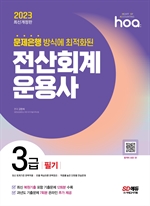
혈액줄기세포 배양 분비인자의 비례-적분파(PID) 제어
- 저자Julia Caldwell, Weijia Wang, Peter W. Zandstra 저
- 출판사아진
- 출판일2020-07-13
- 등록일2020-12-21
- SNS공유


- 파일포맷PDF
- 파일크기15MB
- 공급사YES24
-
지원기기
PC
PHONE
TABLET
프로그램 수동설치
전자책 프로그램 수동설치 안내
아이폰, 아이패드, 안드로이드폰, 태블릿,
보유 1, 대출 0,
예약 0, 누적대출 5, 누적예약 0
책소개
Clinical use of umbilical cord blood has typically been limited by the need toexpand hematopoietic stem and progenitor cells (HSPC) ex vivo. This expansion is
challenging due to the accumulation of secreted signaling factors in the culture
that have a negative regulatory effect on HSPC output. Strategies for global
regulation of these factors through dilution have been developed, but do not
accommodate the dynamic nature or inherent variability of hematopoietic cell
culture. We have developed a mathematical model to simulate the impact of
feedback control on in vitro hematopoiesis, and used it to design a
proportionalintegral-derivative (PID) control algorithm. This algorithm was
implemented with a fed-batch bioreactor to regulate the concentrations of secreted
factors. Controlling the concentration of a key target factor, TGF-β1, through
dilution limited the negative effect it had on HSPCs, and allowed global control of
other similarly-produced inhibitory endogenous factors. The PID control algorithm
effectively maintained the target soluble factor at the target concentration. We
show that feedback controlled dilution is predicted to be a more cost effective
dilution strategy compared to other open-loop strategies, and can enhance HSPC
expansion in short term culture. This study demonstrates the utility of secreted
factor process control strategies to optimize stem cell culture systems, and
motivates the development of multianalyte protein sensors to automate the
manufacturing of cell therapies.
목차
제 1편 : SIMULINK 기본편1.1 SIMULINK의 시작 1
블록의 연결 5
블록 파라미터의 설정 7
시뮬레이션 파라미터 (Configuration Parameters)의 설정 8
시뮬레이션의 수행 9
블록 파라미터의 표시 9
복수 데이터의 표시 11
2.2 동적 시뮬레이션 13
이차 미분방정식 17
선형 상태변수 모델 23
DC 모터의 시뮬레이션 24
함수 블록의 사용 29
차분방정식(difference equation)의 모델링 34
Subsystem(부시스템)의 구성 37
제 2편 : 연구논문
Proportional-Integral-Derivative (PID) Control of Secreted Factors for
Blood Stem Cell Culture
1. Introduction 41
2. Materials and Methods 43
3. Results and Discussion 44
4. PID Controller Design 47
5. Model Predicts Feedback Control Using Controller Enhances
CD34?Expansion 51
6. Conclusions 55
7. Supporting Information 56
8. References 58

















